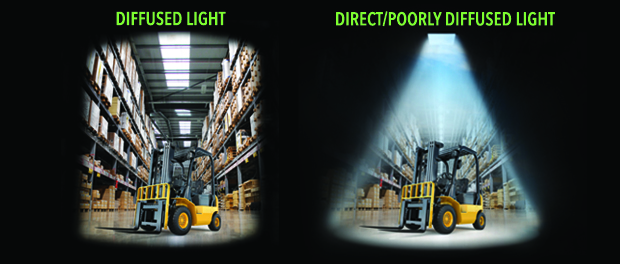A well-considered daylight solution with Zenon GRP rooflights

Rooflights play a vital role in the modern building but are often overlooked. They are the common link to many aspects of building design and can help the designer, the building owner and the occupier to achieve a more sustainable, energy efficient and enjoyable place to work and to live in. Well considered rooflight design at the outset of the building concept can have dramatic effects on all aspects of the building from the owner’s potential asset value to the well-being and productivity of the occupants.
Buildings that provide high levels of natural light are more positive working environments than those which are dependent upon artificial light. It is known that people respond better to working in natural light conditions, as the eye and brain functions work better, resulting in improved concentration and overall performance.
Utilising natural daylight in a building with high levels of insulation can also mean significant savings in energy.
The energy consumed by artificial lighting far exceeds the relatively small amounts of heat energy that are lost through increasing the rooflight area. The amount of energy required to artificially light a well-insulated building is far greater than the amount of energy required to heat it and can be the greatest single energy expenditure in operating the building.
Of course, artificial lighting will always be essential in occupied buildings subject to occupational requirements, particularly in the winter months or in areas where localised specific or constant lighting levels are required, but even low energy lighting systems can create relatively high energy demands.
Zenon GRP rooflights
GRP Rooflights are a simple and cost-effective choice to introduce a more even and useable distribution of natural light, particularly in large structures where light is required deep into the building or in enclosed areas that cannot be lit through an external wall.
GRP, as a thermoset material, can be expected to give extremely long-lasting performance; it is versatile and is manufactured using polyester resins reinforced with transparent glass fibres. As the light passes through the combination of materials the light is scattered by refraction to create a naturally diffusing medium.
Increased areas of light-diffusing rooflights, often with lower light transmission or improved thermal performance, can optimise the energy performance of the building. Reduced areas of rooflights with high light transmission levels and poor diffusion can create glare and hotspots, leaving areas of shadow and gloom that must be overcome with localised artificial lighting – demonstrating poor consideration to the daylight design.
Zenon patented Insulator Honeycomb
Thermally efficient insulated rooflights can further reduce heat loss and energy consumption. The most widely used methods of insulating rooflights is using multiple layers of materials with high-transparency. A common technique would be to use multi-wall or structured polycarbonate sheet. For each layer added, there is a penalty in terms of lost light-transmission due to the cumulative effect of the reflectance of light at each and every layer. As the number of layers increase, so does the light absorption within the rooflight cavity and the greater the re-radiation of heat through the rooflight as a secondary component of solar gain.
To overcome this problem the unique Zenon Insulator honeycomb was developed. It provides much improved U-values without the penalties of creating multiple layers within the rooflight. It achieves this by trapping and containing the air in small pockets within the rooflight cavity thus significantly inhibiting the convection currents that carry the heat through the rooflight panels to the outside air. It is light weight and has a cell structure that is perpendicular to the plane of the rooflight. The light entering the cell structure is channelled into the building creating a better, wider spread of diffused light irrespective of the angle of incidence of the light, and at the same time, minimises the absorptance and re-radiation of the light energy as heat energy.
Zenon Evolution
Another element to consider is a BREEAM assessment. Many local authorities now insist on this before they will give planning permission, therefore it is vital to optimise the rooflight design, distribution and product type.
Unlike traditional GRP rooflights reinforced with short glass fibres, the glass reinforcement in Zenon Evolution is formed from bundles of continuous strands of glass fibres providing very high tensile strength and resistance to tearing. The immense strength of Evolution means that the finished product is manufactured using significantly less resin. The additional benefit of this is a reduction in the embodied carbon in the finished product with no loss in performance.
Using rooflights with low or reduced embodied carbon is a further example of good product
selection that can have a significant effect on the BREEAM assessment.
Ultimately;
- Clients need to have buildings to meet the stringent regulatory requirements that will continue to tighten, or even exceed them.
- Achieving a BREEAM rating of ‘Excellent’ as opposed to ‘Very Good’ can make a significant difference to the developer who is looking to let a large industrial or warehouse building to a prospective client.
- Having a building that is lit by natural daylight will improve the efficiency, productivity, mental alertness and the general health of the occupants that work in the building.
- In combination with good air-tightness and low fabric U-values, a reduction in the use of artificial lighting is the best way the building occupier can lower the energy cost of running the building.
When considering the design of a building it is now vital that rooflights, rather than being an afterthought, are treated as an essential design element right from the start.
For more information on Zenon GRP in-plane and barrel vault rooflights, you can visit our website www.hambleside-danelaw.co.uk/zenon-rooflights

